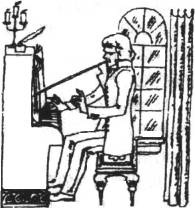Before understanding bone conduction headphones, let’s take a look at the propagation of sound.
Sound transmission
We know that sound originates from the vibration of an object, and the object that can emit sound is called the sound source. The transmission of sound requires a medium. The sound transmission medium we are most familiar with is air. In addition to air, liquids and solids can also transmit sound.
Our ears are a tool to perceive sound, and we can determine the direction of the sound through our ears. For example, we blindfold our eyes in martial arts movies and judge the opponent’s punches by our ears.
How does the ear get sound? This starts with the structure of the ear:
The human ear hears the sound through the external auditory canal-tympanic membrane-auditory ossicles-cochlea-auditory nerve, and finally obtained by the brain. Among them, the vibration through the external auditory canal and periosteum is to use air as the medium. If not through the external auditory canal, but directly through the ossicles to perceive sound vibration.
The sound can also be transmitted to the brain, that is, bone conduction. Of course, sound can also be transmitted to the auditory ossicles through the jaw and then to the auditory nerve, which can also cause hearing.
Principle of Bone Conduction
Generally speaking, the conduction method in which sound transmits signals directly through the auditory ossicles by vibration is called bone conduction.
The principle of bone conduction is to pick up sound based on the vibration of the skull, and the vibration of the jaw can also cause the vibration of the skull. But usually we don’t use our skull to perceive sounds, because the vibration of the skull requires a certain amount of energy. Ordinary sounds cannot cause the skull to vibrate to transmit sound. Only direct contact with the skull can achieve bone conduction.
Bone conduction headphones are developed based on this principle. One of the cheating tools used in the exam is a headset that is bitten by teeth. The sound is transmitted through the vibration of the jaw, which is very concealed and difficult to be found.
When the pathological changes of the auditory organs hinder the transmission of sound waves, bone conduction hearing aids made by the principle of bone conduction can be used to compensate for hearing.
The emergence of bone conduction headphones
Bone conduction earphones appeared in 1935, when Edgar Hand (Edgar Hand) first began to equip patients with bone conduction earphones to help them hear the things around them, and then bone conduction was gradually included in the scope of medical research until the beginning of the 21st century. Consumer electronics are well known to the world.
The earlier application of bone conduction is said to be that the reason why the composer Beethoven can make music even after his deafness is said to have tried a technique invented by Giovanni 61 Filippo 61 Ingracia-biting A stick connected to the piano can hear the music from the jawbone.
Shenzhen WinTo Technology Co., Ltd, since 2015, have been committed to the development of bone conduction technology. Our products have been well accepted by our clients all over the world.
Join us today.



